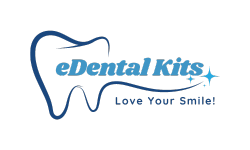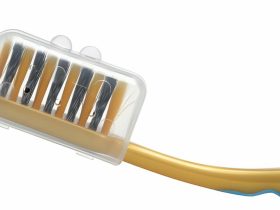
Unlocking the Secrets of the Standard Dental Insurance
Introduction
Are you struggling to make sense of your dental insurance policy? Look no further! In this comprehensive guide, we unlock the secrets of standard dental insurance, helping you navigate the complexities and maximize your benefits.
Understanding the ins and outs of your dental insurance can be a daunting task. With a myriad of terms, coverage limits, and reimbursement levels, it’s easy to feel overwhelmed and confused. But fear not! Our expert team has dissected the standard dental insurance policy to provide you with all the information you need to make informed decisions about your oral health and finances.
From deciphering common insurance terms to demystifying coverage percentages and deductibles, we leave no stone unturned in our quest to empower you with knowledge. We also break down how dental insurance works in conjunction with other dental financing options, ensuring you have a well-rounded understanding of your financial options.
Understanding Dental Insurance Basics

Dental insurance is a type of health insurance that specifically covers dental procedures and treatments. Unlike medical insurance which focuses on general health, dental insurance is designed to help individuals and families maintain good oral health by managing the costs associated with dental care.
Dental insurance plans typically require policyholders to pay a monthly premium, similar to other types of insurance. In return, the insurance company provides coverage for a range of dental services, including routine check-ups, cleanings, fillings, and more extensive procedures like root canals or orthodontic treatments.
It’s important to note that dental insurance is not all-inclusive. Most plans have certain limitations, such as coverage limits, waiting periods, and exclusions for pre-existing conditions. Understanding these limitations is crucial for making informed decisions about your oral health and finances.
Types of Dental Insurance Plans
When it comes to dental insurance, there are two main types of plans: indemnity plans and managed care plans.
Indemnity plans, also known as fee-for-service plans, offer the most flexibility when it comes to choosing a dentist. With an indemnity plan, you can visit any dentist you prefer, and the insurance company will reimburse a percentage of the dental fees based on the plan’s coverage percentages. However, indemnity plans often have higher premiums and deductibles.
Managed care plans, on the other hand, include health maintenance organizations (HMOs) and preferred provider organizations (PPOs). These plans typically have lower premiums and deductibles but restrict your choice of dentists to a network of providers. HMOs require you to select a primary care dentist who will manage all your dental care, while PPOs allow you to visit out-of-network dentists at a higher cost.
Dental Insurance: Coverage & Limits

Standard dental insurance plans generally cover preventive care, basic procedures, and major procedures. Preventive care includes routine check-ups, cleanings, and X-rays, which are typically covered at 100% by insurance plans. Basic procedures like fillings, extractions, and root canals are usually covered at a percentage, often ranging from 70% to 80%. Major procedures like crowns, bridges, and dentures are typically covered at a lower percentage, often around 50%.
It’s important to note that dental insurance plans often have annual coverage limits. These limits dictate the maximum amount the insurance company will pay for dental services in a given year. Once you reach the coverage limit, you will be responsible for paying any additional costs out of pocket.
Dental Insurance: Key Terms Defined
Deciphering dental insurance jargon can be challenging, but understanding key terms and definitions is essential for navigating your dental insurance policy. Here are some common terms you should know:
Premium: The amount you pay monthly or annually to maintain your dental insurance coverage.
Deductible: The amount you must pay out of pocket before your insurance coverage kicks in.
Co-payment: The fixed amount you must pay for certain dental services, typically due at the time of the appointment.
Co-insurance: The percentage of dental fees you are responsible for paying after meeting your deductible.
Out-of-pocket maximum: The maximum amount you will have to pay for dental services in a given year, including deductibles and co-insurance. Once you reach this limit, the insurance company will cover 100% of the remaining costs.
Waiting period: The period you must wait before your dental insurance coverage begins for certain procedures.
By familiarizing yourself with these key terms, you can better understand your dental insurance policy and make informed decisions about your oral health.
Selecting Your Ideal Dental Insurance Plan

Choosing the right dental insurance plan requires careful consideration of several factors. Here are some key considerations to keep in mind:
Assess your oral health needs: Consider your current dental needs and any anticipated procedures or treatments in the future. This will help you determine the level of coverage you require.
Evaluate your budget: Review your budget to determine how much you can comfortably spend on dental insurance premiums and out-of-pocket costs.
Research available plans: Compare different dental insurance plans, taking into account their coverage levels, limitations, and network of dentists. Look for plans that align with your needs and budget.
Read customer reviews: Check online reviews and ratings for different dental insurance providers to get a sense of their customer satisfaction and reliability.
Seek professional advice: Consult with a dental insurance expert or your dentist to get personalized recommendations based on your specific dental needs.
By considering these factors and seeking expert advice, you can make an informed decision when choosing a dental insurance plan.
Dental Insurance Myths: Busted!
There are several common misconceptions about dental insurance that can lead to confusion and frustration. Let’s debunk some of these myths:
Dental insurance covers all dental procedures: While dental insurance provides coverage for a wide range of procedures, it does not cover everything. Some procedures may have limited coverage or exclusions.
Dental insurance is the same as medical insurance: Dental insurance and medical insurance are separate entities with different coverage and limitations. It’s important to understand the distinctions between the two.
Dental insurance is too expensive: Dental insurance premiums vary depending on the plan and coverage levels. Some plans may be more affordable than you think, especially considering the potential savings on dental treatments.
Dental insurance is unnecessary if I have good oral health: Even if I have good oral health, routine preventive care is essential. Dental insurance can help cover the costs of preventive care and provide financial protection in case of unexpected dental issues.
Dental Insurance Tips: Maximize Benefits

To make the most of your dental insurance benefits, consider the following tips:
Schedule regular preventive care appointments: Take advantage of covered preventive services like check-ups and cleanings to catch potential issues early and avoid more extensive and costly treatments.
Understand your coverage: Familiarize yourself with your dental insurance plan’s coverage percentages, exclusions, and limitations to avoid unexpected costs.
Optimize your treatment plans: If you require multiple procedures, work with your dentist to prioritize treatments to maximize insurance coverage and minimize out-of-pocket expenses.
Use in-network providers: When possible, choose dentists within your insurance network to ensure maximum coverage and minimize costs.
Keep track of your dental expenses: Maintain records of your dental expenses, including receipts and explanations of benefits (EOBs), to help you monitor your coverage and identify any discrepancies.
By following these tips, you can effectively utilize your dental insurance benefits and save on dental costs.
Alternatives to Traditional Dental Insurance
Traditional dental insurance may not be the best fit for everyone. Fortunately, there are alternative options available:
Dental discount plans: These plans offer discounted rates for dental services in exchange for a membership fee. While they are not insurance, they can provide significant savings for individuals and families.
Health savings accounts (HSAs) or flexible spending accounts (FSAs): These accounts allow you to set aside pre-tax dollars to pay for qualified medical and dental expenses. Contributions to these accounts can help offset dental costs.
Direct primary care (DPC): DPC models offer a membership-based approach to dental care, where patients pay a monthly fee directly to their dentist in exchange for routine preventive care and discounted rates on other treatments.
Dental financing options: Many dental clinics offer financing options, such as payment plans or third-party financing, to help patients manage the costs of dental treatments.
By exploring these alternative options, you can find a dental financing solution that best fits your needs and budget.
Conclusion
Understanding the secrets of standard dental insurance is the key to taking control of your dental health and finances. By familiarizing yourself with the basics, types of plans, coverage and limitations, key terms, and alternative options, you can make informed decisions that will optimize your oral health and financial well-being.
Don’t let dental insurance be a daunting mystery anymore. Empower yourself with knowledge, ask the right questions, and explore all available options to ensure you have the coverage and financial support you need for a healthy smile. Remember, your oral health matters, and by understanding your dental insurance, you can unlock the secrets to a happier, healthier mouth.
People also ask
Dental insurance often covers preventive care like cleanings and check-ups, as well as basic procedures such as fillings and extractions. Some plans may also include coverage for major services like root canals and crowns.
You can check your dental insurance policy or contact your insurance provider directly to inquire about coverage for specific procedures. They can provide information on covered services, co-pays, and any limitations or exclusions.
It depends on the type of dental insurance plan you have. Some plans offer more flexibility and allow you to visit any licensed dentist, while others may require you to choose from a network of preferred providers. Review your plan details or contact your insurer for clarification.
If you experience a dental emergency, such as severe pain, injury, or sudden swelling, contact your dentist or seek immediate medical attention. Your dental insurance may cover emergency services, but it’s essential to follow the recommended procedures outlined in your policy.












Leave a Reply